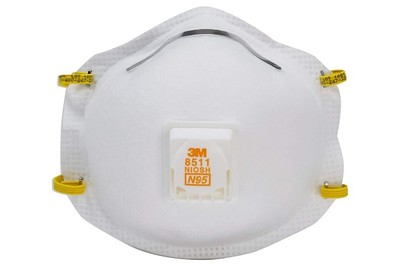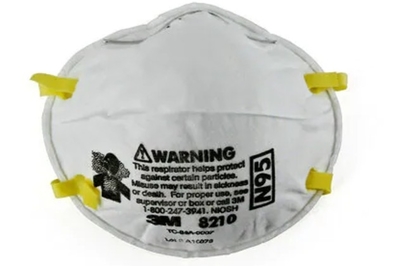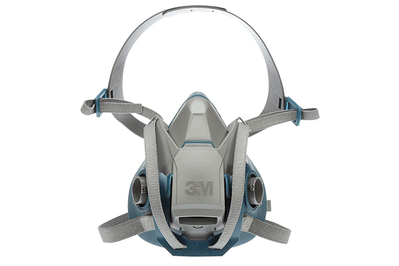If you have already been exposed to affected air after a fire, it’s not too late to protect yourself. Experts I spoke with said to do your best to limit further exposure by limiting your outdoor activities as much as you can, choosing less strenuous activities when you are outdoors, and wearing a tight-fitting N95 respirator mask (or higher protection, like P100) when outside. Some experts I spoke with said a quality KN95 would also provide significant protection outdoors, though the highest possible protection is advised at or near a burn site or in areas where ash has fallen.

Note that N95 masks do not protect against vapors or gases from fires, only particulates. They also may not protect against asbestos fibers that may be in the air, said Dr. Jamie Garfield, a professor of thoracic medicine and surgery at the Lewis Katz School of Medicine at Temple University in Philadelphia, in an email through the American Lung Association.
“Asbestos fibers are well
Galiatsatos noted that you may want to think of it in terms of exposure over time and proximity to the burn site. He said he would advise anyone to continue to mask out of precaution “if you had a massive exposure initially” and you’re now returning.
Beyond considering your prior exposure and proximity to the burn area, people who are especially vulnerable are infants, children, pregnant people, those over 65, and those with underlying respiratory or cardiovascular conditions. As always, it’s best to discuss your personal risk with a physician.
Given the unknowns and potential long-term risks, Dralyuk suggested that everyone who can should exercise caution and wear a mask even when AQI readings are 40 and above (51 to 100 is considered “moderate” AQI), due to the index’s limitations.
“Even if someone is just a healthy, young person, I would take this very seriously,” said Dralyuk, due to the potential for serious long-term impacts, including from potentially carcinogenic exposures.
When masking, fit is as important as the filtration level you wear, said Christenson. In addition to our guide to respirators for wildfire smoke and dust, we have a guide to KN95 masks for kids and toddlers; cloth masks are not advised, but a high-quality KN95 may offer a better fit for smaller faces, said Christenson.
Top pick
“It’s important to be vigilant about monitoring your local air quality and be conscious of both outdoor and indoor environments,” said Dr. Sonali Bose, associate professor of medicine (pulmonary, critical care and sleep medicine) and pediatrics at the Icahn School of Medicine at Mount Sinai, in an email.
Harmful particles can also cling to your clothing and hair and reenter indoor air once you’ve come inside. Soon after returning, you should change out of outside clothing and wash your hair, said Galiatsatos.
Indoors, continue to run air purifiers or use central air. If you can, upgrade your HVAC filter to a MERV 13 rated filter or higher, advised Allen. If you smell lingering smoke inside, Wirecutter has advice on how to clear your space from wildfire smoke and a guide to the best air quality monitors for your home.

I asked Dralyuk, who lives and practices in Los Angeles, how long she advises taking air quality precautions after an urban wildfire dies down. A pediatric pulmonologist, she said she’s telling families with children to wait at least two weeks until a fire is fully contained to return to the area. “But for masking, I would say probably weeks.”
Nadeau, who spoke on a panel at Harvard’s T.H. Chan School of Public Health late last year on the dangers of wildfire smoke over widespread areas, suggested a month of masking.
“Realistically, for probably weeks, if not longer, after the fires are extinguished, we’re going to have lasting impact on health in terms of our air quality, whether we can smell it or not,” Dralyuk said, adding, “The exposure to particles in our air is a risk for everybody.”
This piece was edited by Maxine Builder and Megan Beauchamp.







